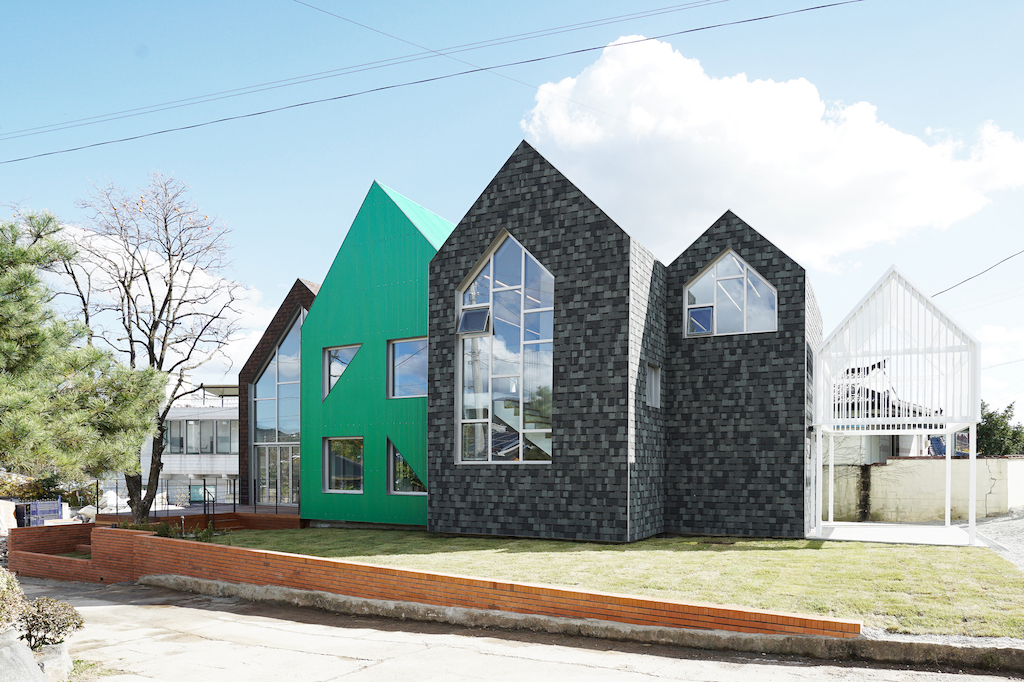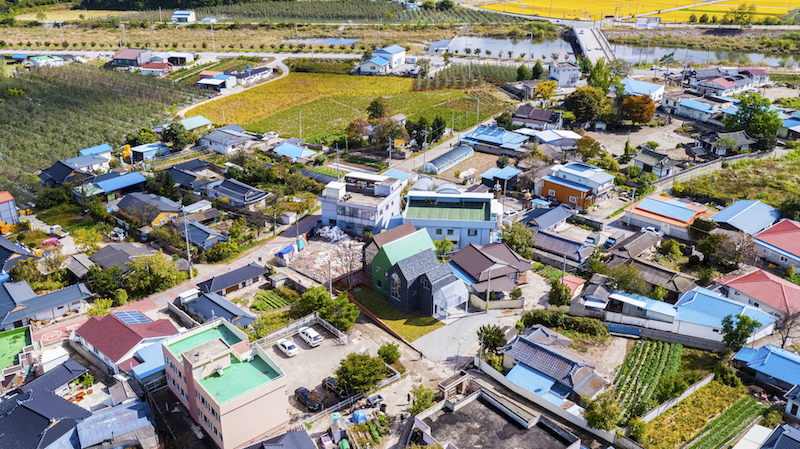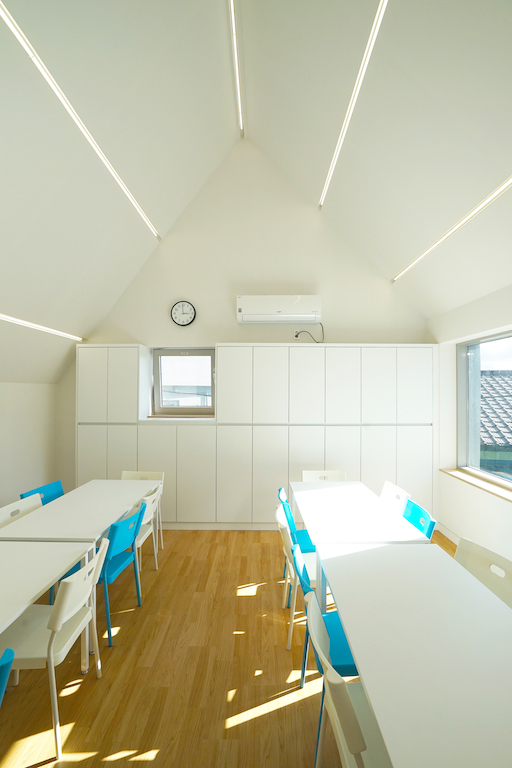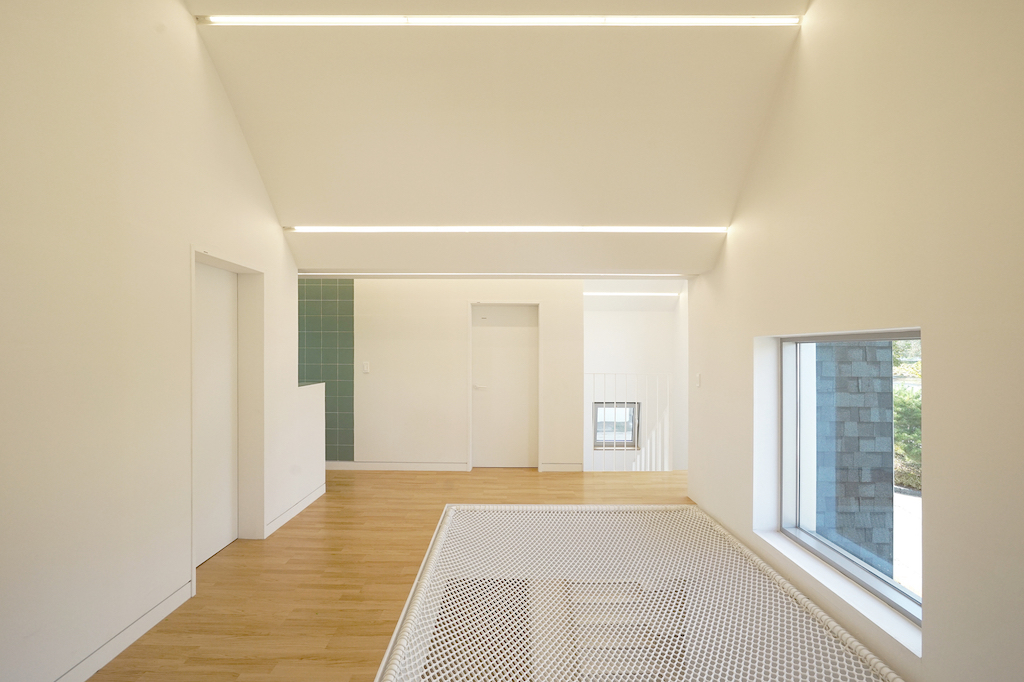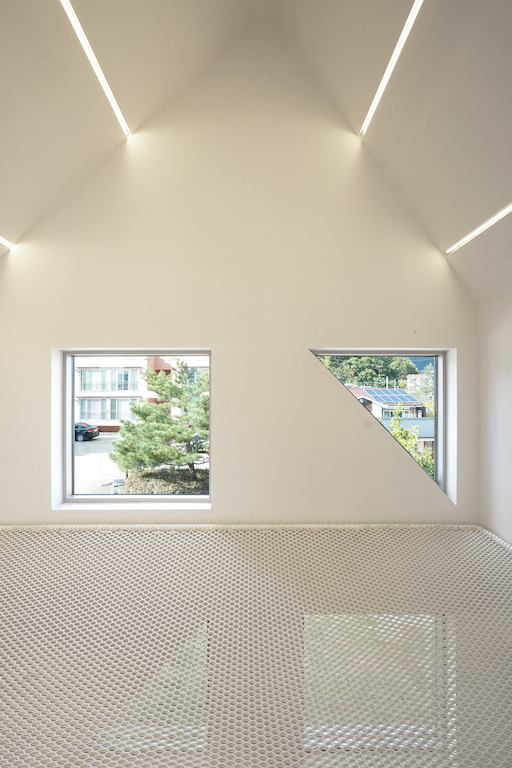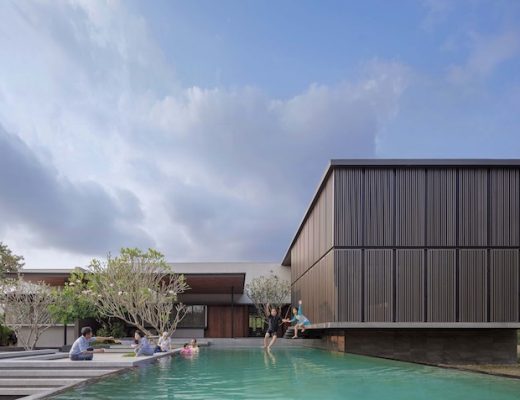JYA-RCHITECTS has designed a 140m² childcare centre in Cheongsong-gun in South Korea‘s northern province of Gyeongsangbuk-do, which aims to foster a closer bond with the local community. It started by asking such questions as “What is the community child center; which children from our district go there, And what do they do there?”
In the process, the design team led by architects Won Youmin, Jo Janghee, established that generally childcare centers do not have enough space to provide sufficient stimuli and diverse experiences to children. Most local childcare centers provide physical space only, limiting most activities and plays in the space to be two-dimensional.
“So we proposed a childcare centre as an important infrastructure of the district, with more points of contact with the local community while creating a safer and healthier environment for children.” – Design team, JYA-RCHITECTS
Studies have shown that children receive stimuli from various experiences, which lead to their physical and mental development. Diverse spaces are needed to facilitate such experiences, where children can build new relationships, feel happy, and grow healthy. This becomes even more significant in a stagnant rural village with a decreasing population, where the vibrancy of children’s activities creates a happy and dynamic community.
Another aspect to consider was that there are various types of members in a district, such as multicultural families and the elderly. We hope that a childcare centre is more than just a space for children — a place for activities and participation of members of the district. In a district without sufficient cultural and social space, the centre becomes a base for the people to gather, produce, share, learn, and connect. During the process, the people of the community naturally meet the children from the centre and get acquainted with them, initiating communication between the local community and childcare center.
“We wanted to spatially emphasise the following two points. Firstly, we wished that the children viewed the space three-dimensionally through the experiences within the centre, with different heights and levels, and the vertical mutual exchanges within the centre. This was because we wished to provide diverse spatial stimuli to children familiar with two-dimensional flat spaces, such as schools.
“Secondly, through the active connection with external spaces. We wished that the children would freely go in and outside space while playing. During the process, it was expected that the children directly feel the changes in weather and season, and the diverse happened between inside and outside. We believe that such stimuli and senses are the most fundamental values for a childcare center as a space for children,” explain the architects.
Photos: JYA-RCHITECTS

